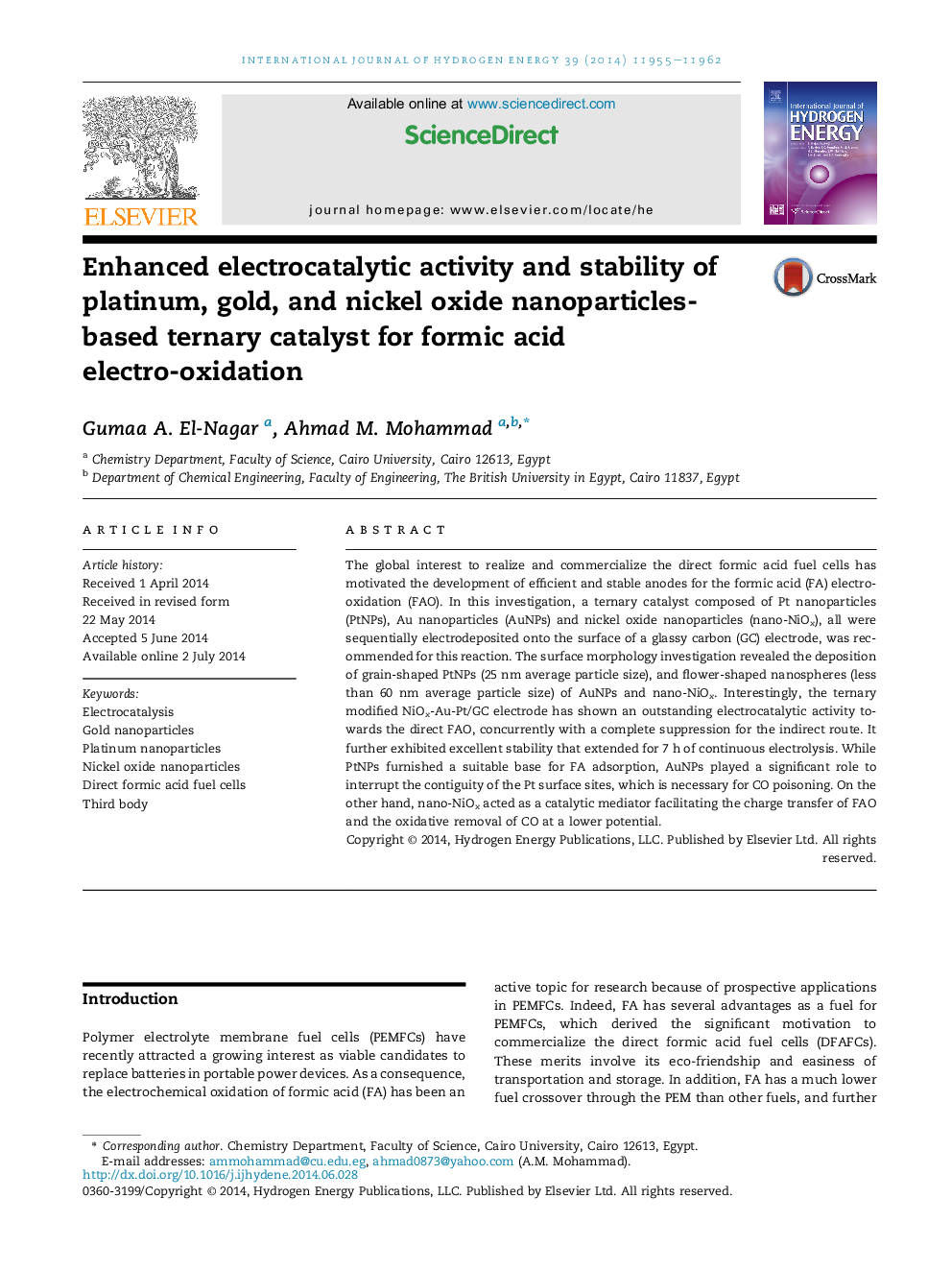| Article ID | Journal | Published Year | Pages | File Type |
|---|---|---|---|---|
| 1272994 | International Journal of Hydrogen Energy | 2014 | 8 Pages |
•A ternary modified GC catalyst was developed for the formic acid electro-oxidation (FAO).•The catalyst’ preparation involved a sequential deposition of Pt, Au, and NiOx nanoparticles onto GC substrate.•A superb enhancement in the catalytic activity of the direct FAO was achieved.•The catalyst exhibited excellent stability extended for 7 h of continuous electrolysis.•The β-NiOOH is believed to mediate the oxidation facilitating the electron transfer.
The global interest to realize and commercialize the direct formic acid fuel cells has motivated the development of efficient and stable anodes for the formic acid (FA) electro-oxidation (FAO). In this investigation, a ternary catalyst composed of Pt nanoparticles (PtNPs), Au nanoparticles (AuNPs) and nickel oxide nanoparticles (nano-NiOx), all were sequentially electrodeposited onto the surface of a glassy carbon (GC) electrode, was recommended for this reaction. The surface morphology investigation revealed the deposition of grain-shaped PtNPs (25 nm average particle size), and flower-shaped nanospheres (less than 60 nm average particle size) of AuNPs and nano-NiOx. Interestingly, the ternary modified NiOx-Au-Pt/GC electrode has shown an outstanding electrocatalytic activity towards the direct FAO, concurrently with a complete suppression for the indirect route. It further exhibited excellent stability that extended for 7 h of continuous electrolysis. While PtNPs furnished a suitable base for FA adsorption, AuNPs played a significant role to interrupt the contiguity of the Pt surface sites, which is necessary for CO poisoning. On the other hand, nano-NiOx acted as a catalytic mediator facilitating the charge transfer of FAO and the oxidative removal of CO at a lower potential.
